Social Network Analysis of Sustainable Human Resource Management from the Employee Training’s Perspective
Abstract
1. Introduction
2. Literature Review
2.1. Sustainable Human Resource Management
2.2. Employee Training
2.3. Proposed Methods
3. Research Methodology
3.1. Identification of Employee Training Activities and Keyword Selection
3.2. The Construction of Networks Related to Employee Training
3.2.1. Enterprise-Employee Training Activity Network
3.2.2. Employee Training Activities Network
3.2.3. Enterprise Network
3.3. Indicators of Corporate Employee Training Behaviour
3.3.1. Degree Centrality
3.3.2. Core-Periphery Measures
3.3.3. Density
4. Results and Analysis
4.1. Data Collection
4.2. Visualization of the Networks
4.3. Centrality and Structure Analysis of the Social Network
4.3.1. Centrality Analysis of the Two-Mode Network
4.3.2. Single-Mode Centrality Analysis
4.3.3. The Core-Periphery Structure Analysis
4.3.4. Structural Features of the Networks
5. Discussion
6. Conclusions
Author Contributions
Funding
Acknowledgments
Conflicts of Interest
References
- Hahn, T.; Scheermesser, M. Approaches to corporate sustainability among German companies. Corp. Soc. Responsib. Environ. Manag. 2006, 13, 150–165. [Google Scholar] [CrossRef]
- Bocken, N.M.; Short, S.W.; Rana, P.; Evans, S. A literature and practice review to develop sustainable business model archetypes. J. Clean. Prod. 2013, 65, 42–56. [Google Scholar] [CrossRef]
- Gleick, P.H. Water in crisis: Paths to sustainable water use. Ecol. Appl. 1998, 8, 571–579. [Google Scholar] [CrossRef]
- Liu, Y.; Gupta, H.; Springer, E.; Wagener, T. Linking science with environmental decision making: Experiences from an integrated modeling approach to supporting sustainable water resources management. Environ. Model. Softw. 2008, 23, 846–858. [Google Scholar] [CrossRef]
- Antonelli, M.; Ruini, L.F. Business Engagement with sustainable water resource management through water footprint accounting: The case of the barilla company. Sustainability 2015, 7, 6742–6758. [Google Scholar] [CrossRef]
- Prior, T.; Giurco, D.; Mudd, G.; Mason, L.; Behrisch, J. Resource depletion, peak minerals and the implications for sustainable resource management. Glob. Environ. Chang-Hum. Policy Dimens. 2012, 22, 577–587. [Google Scholar] [CrossRef]
- Christmann, P. Towards a more equitable use of mineral resources. Nat. Resour. Res. 2018, 27, 159–177. [Google Scholar] [CrossRef]
- Alikhani, R.; Azar, A. A hybrid fuzzy satisfying optimization model for sustainable gas resources allocation. J. Clean. Prod. 2015, 107, 353–365. [Google Scholar] [CrossRef]
- Ahmad, S.; Tahar, R.M. Selection of renewable energy sources for sustainable development of electricity generation system using analytic hierarchy process: A case of Malaysia. Renew. Energy 2014, 63, 458–466. [Google Scholar] [CrossRef]
- Sun, B.F.; Li, J.H. Science and technology resources allocation research based on the sustainable development. Soc. Sci. Front. 2001, 5, 36–39. [Google Scholar]
- Wu, J.; Wu, G.D.; Zhou, Q.; Li, M. Spatial variation of regional sustainable development and its relationship to the allocation of science and technology resources. Sustainability 2014, 6, 6400–6417. [Google Scholar] [CrossRef]
- Guest, D.E. Human resource management and performance: Still searching for some answers. Hum. Resour. Manag. J. 2011, 21, 3–13. [Google Scholar] [CrossRef]
- Jiang, K.; Lepak, D.P.; Hu, J.; Baer, J.C. How does human resource management influence organizational outcomes? A meta-analytic investigation of mediating mechanisms. Acad. Manag. J. 2012, 55, 1264–1294. [Google Scholar] [CrossRef]
- Renwick, D.W.S.; Redman, T.; Maguire, S. Green human resource management: A review and research agenda. Int. J. Manag. Rev. 2013, 15, 1–14. [Google Scholar] [CrossRef]
- Cheema, S.; Javed, F. The effects of corporate social responsibility toward green human resources management: The mediating role of sustainable environment. Cogent Bus. Manag. 2017, 4, 1310012. [Google Scholar] [CrossRef]
- Jabbour, C.J.C.; Santos, F.C.A. The central role of human resource management in the search for sustainable organizations. Int. J. Hum. Resour. Manag. 2008, 19, 12. [Google Scholar] [CrossRef]
- Ehnert, I.; Harry, W. Recent developments and future prospects on sustainable human resource management: Introduction to the special issue. Manag. Rev. 2012, 23, 221–238. [Google Scholar] [CrossRef]
- Chams, N.; García-Blandón, J. On the importance of sustainable human resource management for the adoption of sustainable development goals. Resour. Conserv. Recycl. 2019, 141, 109–122. [Google Scholar] [CrossRef]
- Kramar, R. Beyond strategic human resource management: Is sustainable human resource management the next approach? Int. J. Hum. Resour. Manag. 2014, 25, 1069–1089. [Google Scholar] [CrossRef]
- Ehnert, I. Sustainability and human resource management: Reasoning and applications on corporate websites. Eur. J. Int. Manag. 2009, 3, 419–438. [Google Scholar] [CrossRef]
- Tooranloo, H.S.; Azadi, M.H.; Sayyahpoor, A. Analyzing factors affecting implementation success of sustainable human resource management (SHRM) using a hybrid approach of FAHP and Type-2 fuzzy DEMATEL. J. Clean. Prod. 2017, 162, 1252–1265. [Google Scholar] [CrossRef]
- Tharenou, P.; Saks, A.M.; Moore, C. A review and critique of research on training and organizational-level outcomes. Hum. Resour. Manag. Rev. 2007, 17, 251–273. [Google Scholar] [CrossRef]
- Baumgartner, R.J.; Winter, T. The sustainability manager: A tool for education and training on sustainability management. Corp. Soc. Responsib. Environ. Manag. 2014, 21, 167–174. [Google Scholar] [CrossRef]
- Davis, K.; Boulet, M. Transformations? Skilled change agents influencing organizational sustainability culture. Aust. J. Environ. Educ. 2016, 32, 109–123. [Google Scholar] [CrossRef]
- Camilleri, M.A. Corporate sustainability and responsibility toward education. J. Glob. Responsib. 2016, 7, 56–71. [Google Scholar] [CrossRef]
- Di Vaio, A.; Varriale, L. Management innovation for environmental sustainability in seaports: Managerial accounting instruments and training for competitive green ports beyond the regulations. Sustainability 2018, 10, 783. [Google Scholar] [CrossRef]
- Borgatti, S.P.; Mehra, A.; Brass, D.J.; Labianca, G. Network Analysis in the Social Sciences. Science 2009, 323, 892–895. [Google Scholar] [CrossRef]
- Almgren, K.; Lee, J. An empirical comparison of influence measurements for social network analysis. Soc. Netw. Anal. Min. 2016, 6, 52. [Google Scholar] [CrossRef]
- Fernandes, S.; Belo, A.; Castela, G. Social network enterprise behaviors and patterns in SMEs: Lessons from a Portuguese local community centered around the tourism industry. Technol. Soc. 2016, 44, 15–22. [Google Scholar] [CrossRef]
- Li, E.; Li, X.; Liu, Z. Relationships and evolving networks of rural manufacturing clusters: A case study in Yucheng County, Henan Province of China. Chin. Geogr. Sci. 2011, 21, 364–376. [Google Scholar] [CrossRef]
- Xue, X.; Zhang, X.; Wang, L.; Skitmore, M.; Wang, Q. Analyzing collaborative relationships among industrialized construction technology innovation organizations: A combined SNA and SEM approach. J. Clean. Prod. 2018, 173, 265–277. [Google Scholar] [CrossRef]
- Almgren, K.; Lee, J. Applying an influence measurement framework to large social network. J. Netw. Technol. 2016, 7, 7. [Google Scholar]
- Park, S.H.; Kwak, T.K.; Chang, H.J. Evaluation of the food safety training for food handlers in restaurant operations. Nutr. Res. Pract. 2010, 4, 58–68. [Google Scholar] [CrossRef] [PubMed]
- Ji, L.; Huang, J.; Liu, Z.; Zhu, H.; Cai, Z. The effects of employee training on the relationship between environmental attitude and firms’ performance in sustainable development. Int. J. Hum. Resour. Manag. 2012, 23, 2995–3008. [Google Scholar] [CrossRef]
- Mellor, N.J.; Ingram, L.; van Huizen, M.; Arnold, J.; Harding, A.-H. Mindfulness training and employee well-being. Int. J. Workplace Health Manag. 2016, 9, 126–145. [Google Scholar] [CrossRef]
- Freitas, W.R.S.; Jabbour, C.J.; Santos, F.C.A. Continuing the evolution: Towards sustainable HRM and sustainable organizations. Bus. Strat. Ser. 2011, 12, 226–234. [Google Scholar] [CrossRef]
- Cohen, E.; Taylor, S.; Muller-Camen, M. HRM’s Role in Corporate Social and Environmental Sustainability; SHRM Report; SHRM: Alexandria, VA, USA, 2012. [Google Scholar]
- Wagner, M. ‘Green’ human resource benefits: Do they matter as determinants of environmental management system implementation? J. Bus. Ethics 2013, 114, 443–456. [Google Scholar] [CrossRef]
- Ehnert, I.; Parsa, S.; Roper, I.; Wagner, M.; Muller-Camen, M. Reporting on sustainability and HRM: A comparative study of sustainability reporting practices by the world’s largest companies. Int. J. Hum. Resour. Manag. 2016, 27, 88–108. [Google Scholar] [CrossRef]
- Macke, J.; Genari, D. Systematic literature review on sustainable human resource management. J. Clean. Prod. 2019, 208, 806–815. [Google Scholar] [CrossRef]
- Kim, Y.J.; Kim, W.G.; Choi, H.M.; Phetvaroon, K. The effect of green human resource management on hotel employees’ eco-friendly behavior and environmental performance. Int. J. Hosp. Manag. 2019, 76, 83–93. [Google Scholar] [CrossRef]
- Juang, Y.S.; Lin, S.S.; Kao, H.P. An adaptive scheduling system with genetic algorithms for arranging employee training programs. Expert Syst. Appl. 2007, 33, 642–651. [Google Scholar] [CrossRef]
- Jabbour, C.J.C.; Santos, F.C.A. Relationships between human resource dimensions and environmental management in companies: Proposal of a model. J. Clean. Prod. 2008, 16, 51–58. [Google Scholar] [CrossRef]
- Hanaysha, J. Examining the effects of employee empowerment, teamwork, and employee training on organizational commitment. Procedia-Soc. Behav. Sci. 2016, 229, 298–306. [Google Scholar] [CrossRef]
- Noe, R.A.; Schmitt, N. The influence of trainee attitudes on training effectiveness: Test of a mode. Pers. Psychol. 1986, 39, 497–523. [Google Scholar] [CrossRef]
- Hanaysha, J.; Tahir, P.R. Examining the effects of employee empowerment, teamwork, and employee training on job satisfaction. Procedia-Soc. Behav. Sci. 2016, 219, 272–282. [Google Scholar] [CrossRef]
- Greene, C.; Canning, D.; Wilson, J.; Bak, A.; Tingle, A.; Tsiami, A.; Loveday, H. I-Hydrate training intervention for staff working in a care home setting: An observational study. Nurse Educ. Today 2018, 68, 61–65. [Google Scholar] [CrossRef] [PubMed]
- Shulman, C.; Hudson, B.F.; Kennedy, P.; Brophy, N.; Stone, P. Evaluation of training on palliative care for staff working within a homeless hostel. Nurse Educ. Today 2018, 71, 135–144. [Google Scholar] [CrossRef] [PubMed]
- Wang, C.; Wei, S.; Xiang, H.; Xu, Y.; Han, S.; Mkangara, O.B.; Nie, S. Evaluating the effectiveness of an emergency preparedness training programme for public health staff in China. Public Health 2008, 122, 471–477. [Google Scholar] [CrossRef]
- Hartzler, B.; Jackson, T.R.; Jones, B.E.; Beadnell, B.; Calsyn, D.A. Disseminating contingency management: Impacts of staff training and implementation at an opiate treatment program. J. Subst. Abuse Treat. 2014, 46, 429–438. [Google Scholar] [CrossRef]
- Majumdar, S. Market conditions and worker training: How does it affect and whom? Labour Econ. 2007, 14, 1–23. [Google Scholar] [CrossRef]
- Hara, H. Minimum wage effects on firm-provided and worker-initiated training. Labour Econ. 2017, 47, 149–162. [Google Scholar] [CrossRef]
- Schafheutle, E.I.; Jee, S.D.; Willis, S.C. The influence of learning environment on trainee pharmacy technicians’ education and training experiences. Res. Soc. Adm. Pharm. 2018, 14, 1020–1026. [Google Scholar] [CrossRef] [PubMed]
- Jaworski, C.; Ravichandran, S.; Karpinski, A.C.; Singh, S. The effects of training satisfaction, employee benefits, and incentives on part-time employees’ commitment. Int. J. Hosp. Manag. 2018, 74, 1–12. [Google Scholar] [CrossRef]
- Sellers, K.; Leider, J.P.; Harper, E.; Castrucci, B.C.; Bharthapudi, K.; Liss-Levinson, R.; Jarris, P.E.; Hunter, E.L. The public health workforce interests and needs survey: The first national survey of state health agency employee. J. Public Health Manag. Pract. 2015, 21, 13–27. [Google Scholar] [CrossRef] [PubMed]
- Park, S.; Lee, S.-J.; Jun, S. A network analysis model for selecting sustainable technology. Sustainability 2015, 7, 13126–13141. [Google Scholar] [CrossRef]
- Morone, P.; Tartiu, V.E.; Falcone, P. Assessing the potential of biowaste for bioplastics production through social network analysis. J. Clean. Prod. 2015, 90, 43–54. [Google Scholar] [CrossRef]
- Prell, C.; Hubacek, K.; Reed, M. Stakeholder analysis and social network analysis in natural resource management. Soci. Nat. Resour. 2009, 22, 501–518. [Google Scholar] [CrossRef]
- Ter Wal, A.L.J.; Boschma, R.A. Applying social network analysis in economic geography: Framing some key analytic issues. Ann. Reg. Sci. 2009, 43, 739–756. [Google Scholar] [CrossRef]
- Dragomiroiu, R.; Hurloiu, I.; Mihai, G. Induction staff training. Procedia Econ. Financ. 2014, 16, 368–373. [Google Scholar] [CrossRef]
- Dobbs, S.; van Staden, C. Motivations for corporate social and environmental reporting: New Zealand evidence. Sustain. Acc. Manag. Policy J. 2016, 7, 449–472. [Google Scholar] [CrossRef]
- Borden, L.M.; Schlomer, G.L.; Wiggs, C.B. The evolving role of youth workers. J. Youth Dev. 2011, 6, 126–138. [Google Scholar] [CrossRef]
- Chapman, R.; Martin, C.; Smith, T. Evaluation of staff cultural awareness before and after attending cultural awareness training in an Australian emergency department. Int. Emerg. Nurs. 2014, 22, 179–184. [Google Scholar] [CrossRef] [PubMed]
- Lock, I.; Seele, P. The credibility of CSR (corporate social responsibility) reports in Europe: Evidence from a quantitative content analysis in 11 countries. J. Clean. Prod. 2016, 122, 186–200. [Google Scholar] [CrossRef]
- Carrington, P.J.; Scott, J.; Wasserman, S. Models and Methods in Social Network Analysis; Cambridge University Press: Cambridge, UK, 2005. [Google Scholar]
- Fernandez, E.; Junquera, B.; Ordiz, M. Organizational culture and human resources in the environmental issue: A review of the literature. Int. J. Hum. Resour. Manag. 2003, 14, 634–656. [Google Scholar] [CrossRef]
- Parker, R. Green organizational performance: Behavioral change interventions based on the theory of planned behavior. In Going Green: The Psychology of Sustainability in the Workplace; Bartlett, D., Ed.; The British Psychological Society UK: London, UK, 2011; pp. 36–46. [Google Scholar]
- Renwick, D.W.S.; Jabbour, C.J.C.; Muller-Camen, M.; Redman, T.; Wilkinson, A. Contemporary developments in green (environmental) HRM scholarship. Int. J. Hum. Resour. Manag. 2015, 5192, 1–15. [Google Scholar] [CrossRef]
- Jabbour, C.J.C.; Jugend, D.; de Sousa Jabbour, A.B.L.; Gunasekaran, A.B.L.; Latan, H. Green product development and performance of Brazilian firms: Measuring the role of human and technical aspects. J. Clean. Prod. 2015, 87, 442–451. [Google Scholar] [CrossRef]
- Phillips, L. Go green to gain the edge over rivals. People Manag. 2007, 23, 9. [Google Scholar]
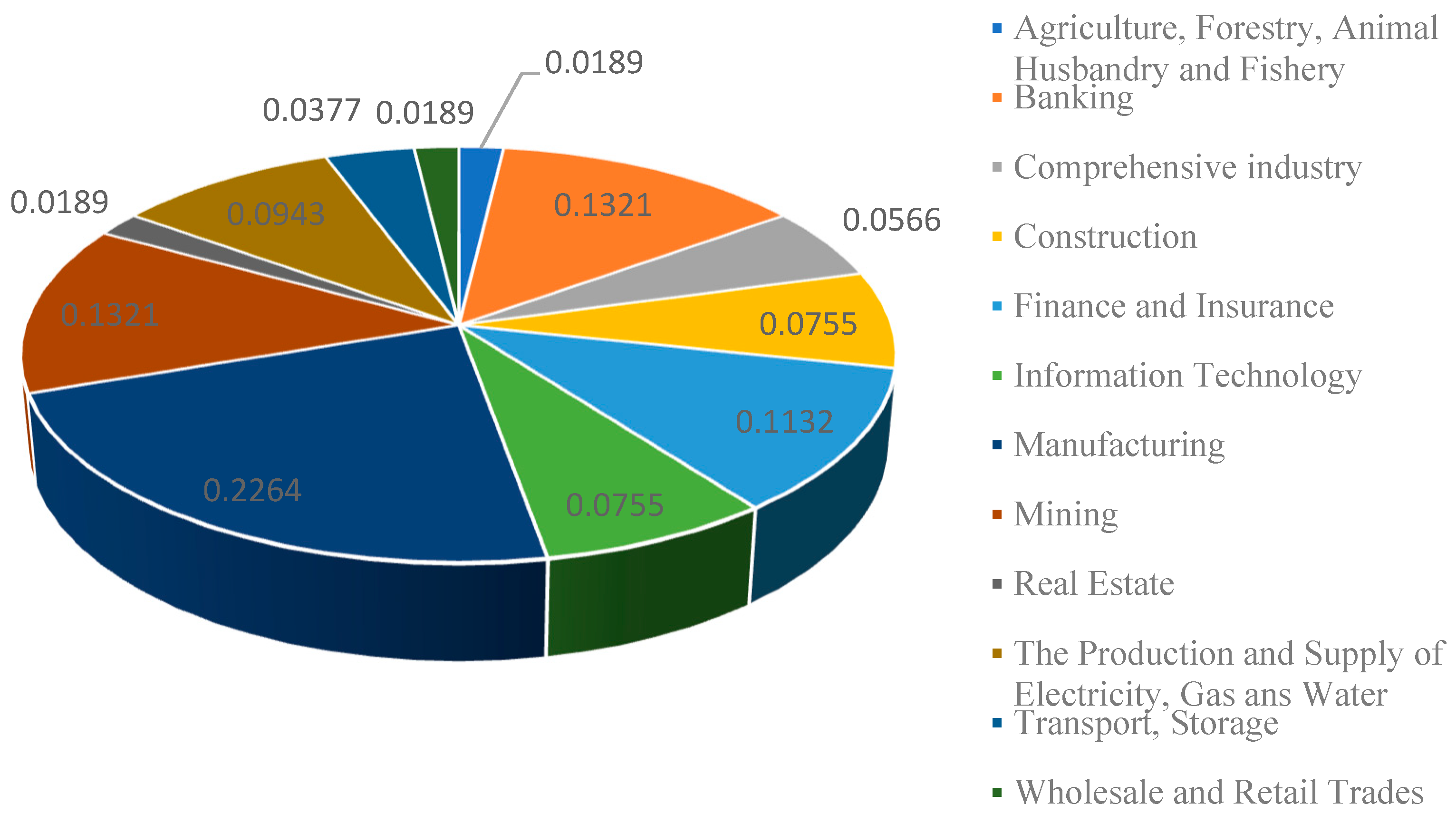
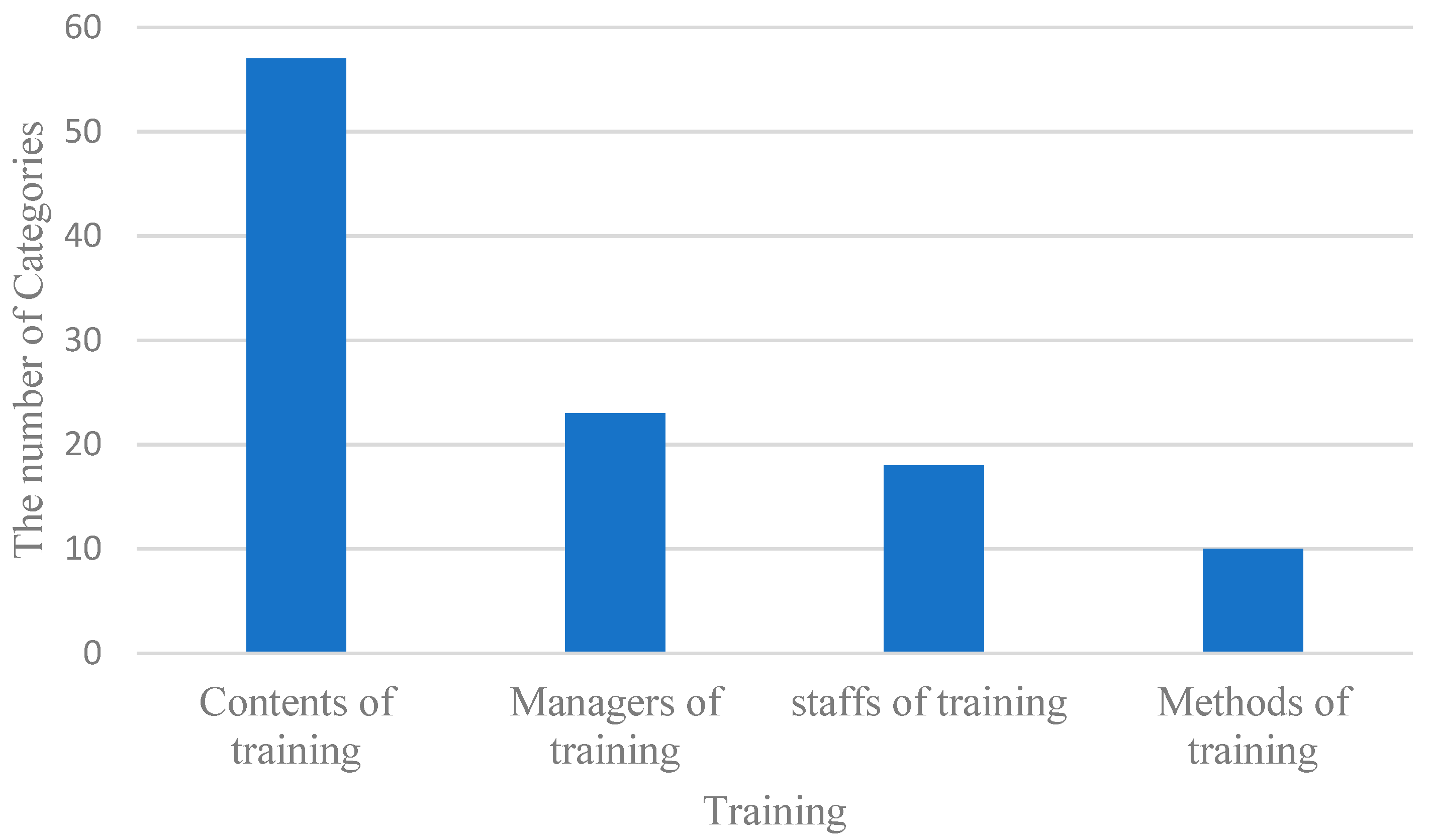
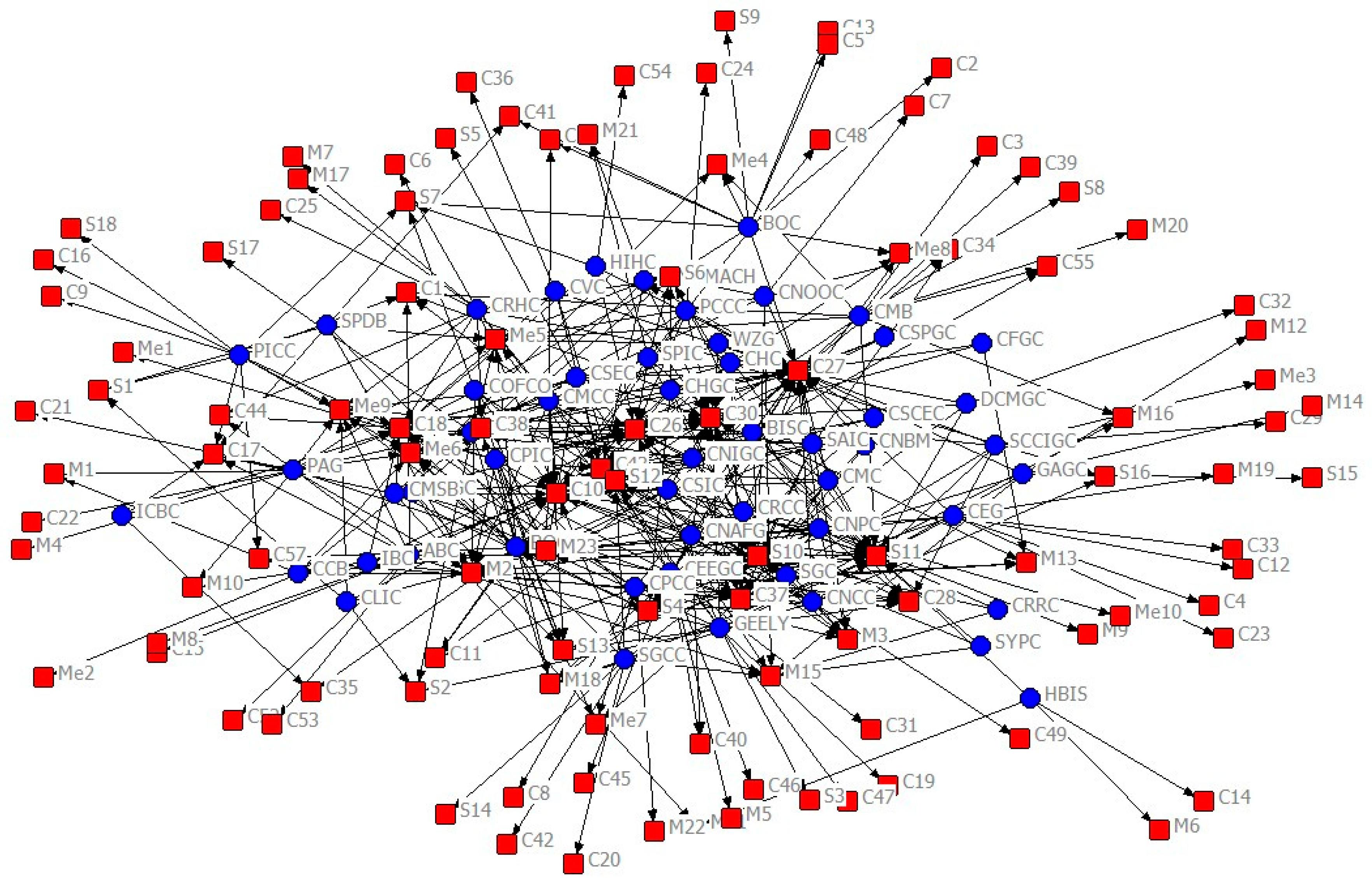

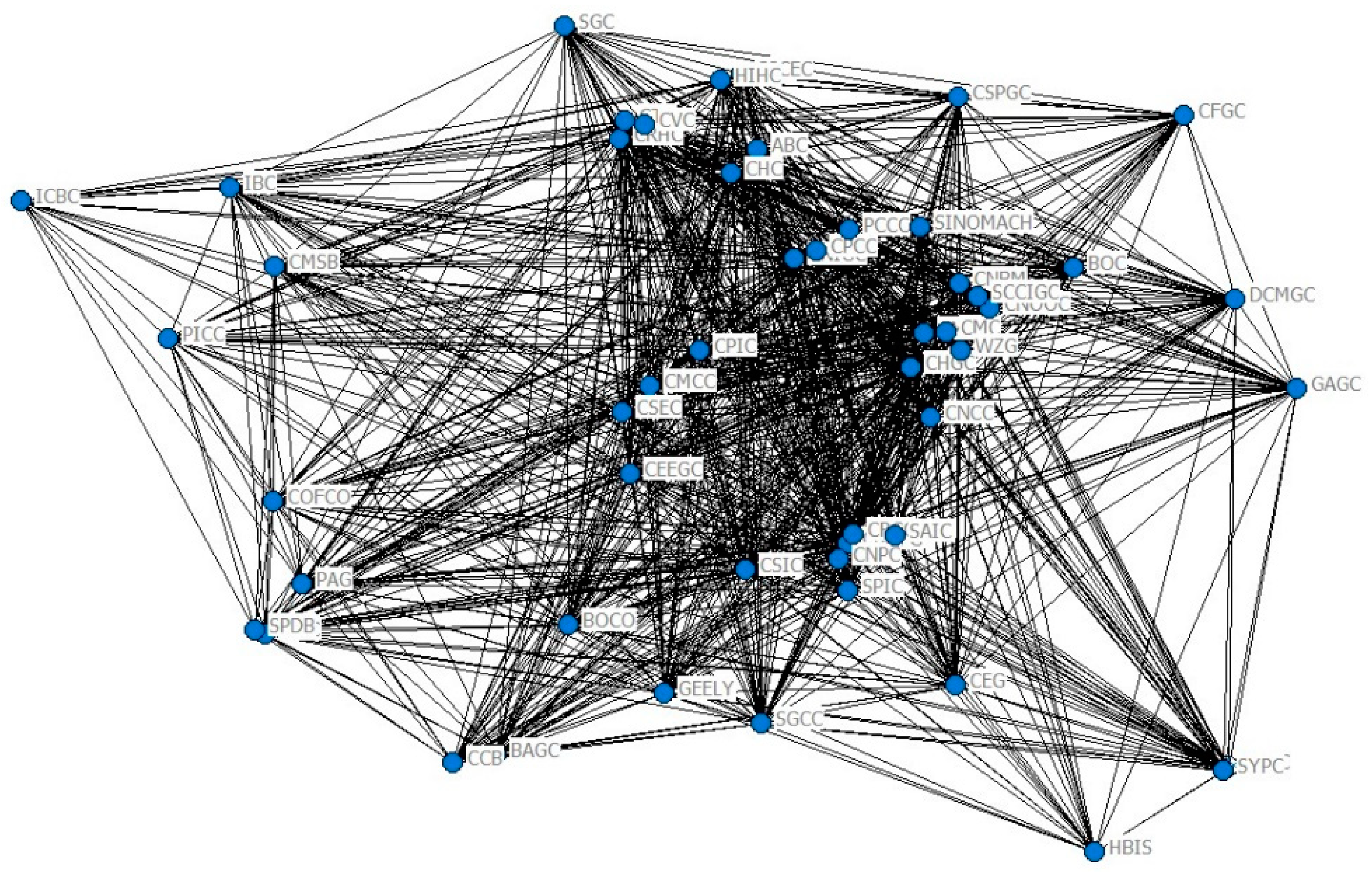
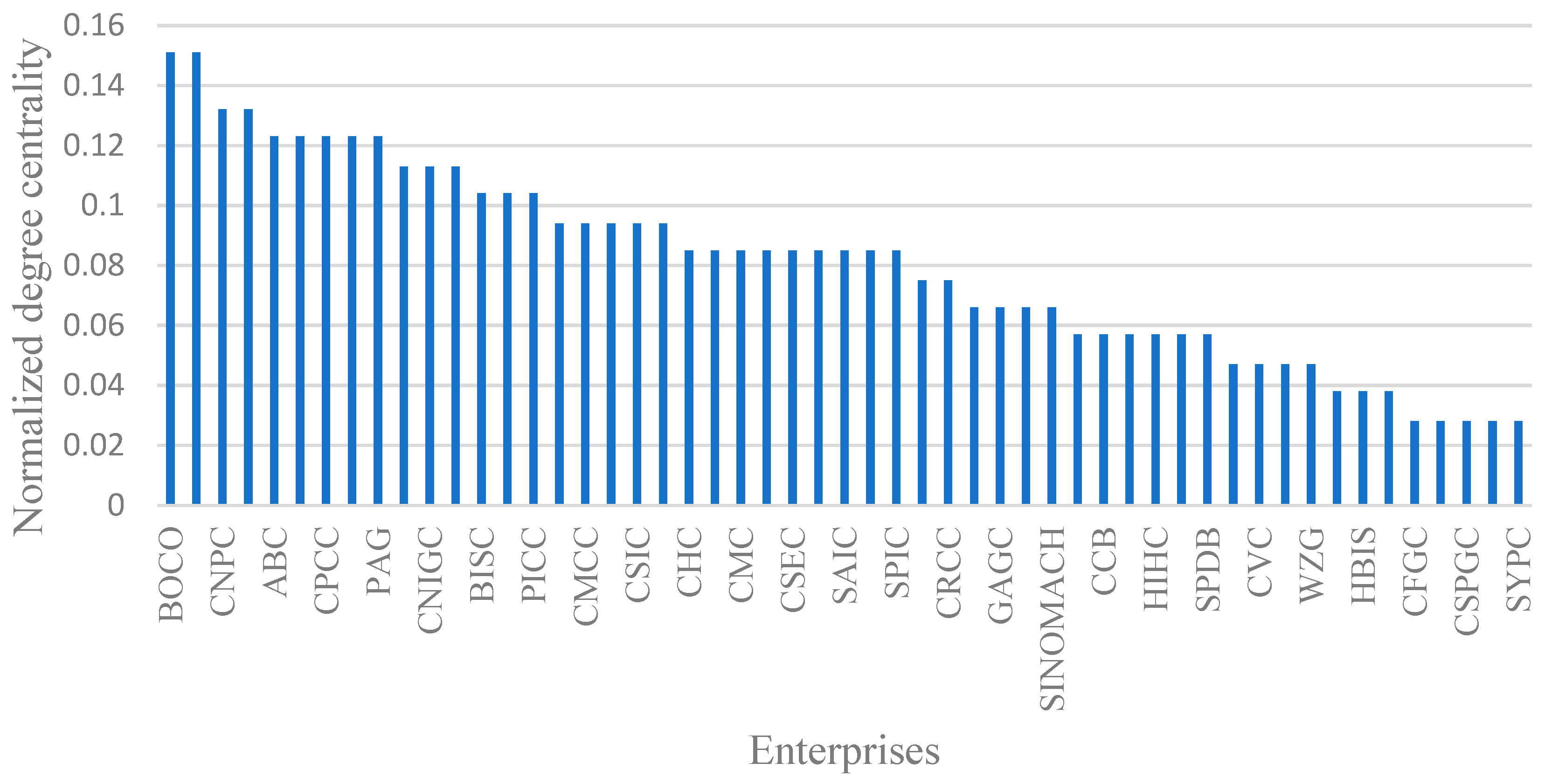
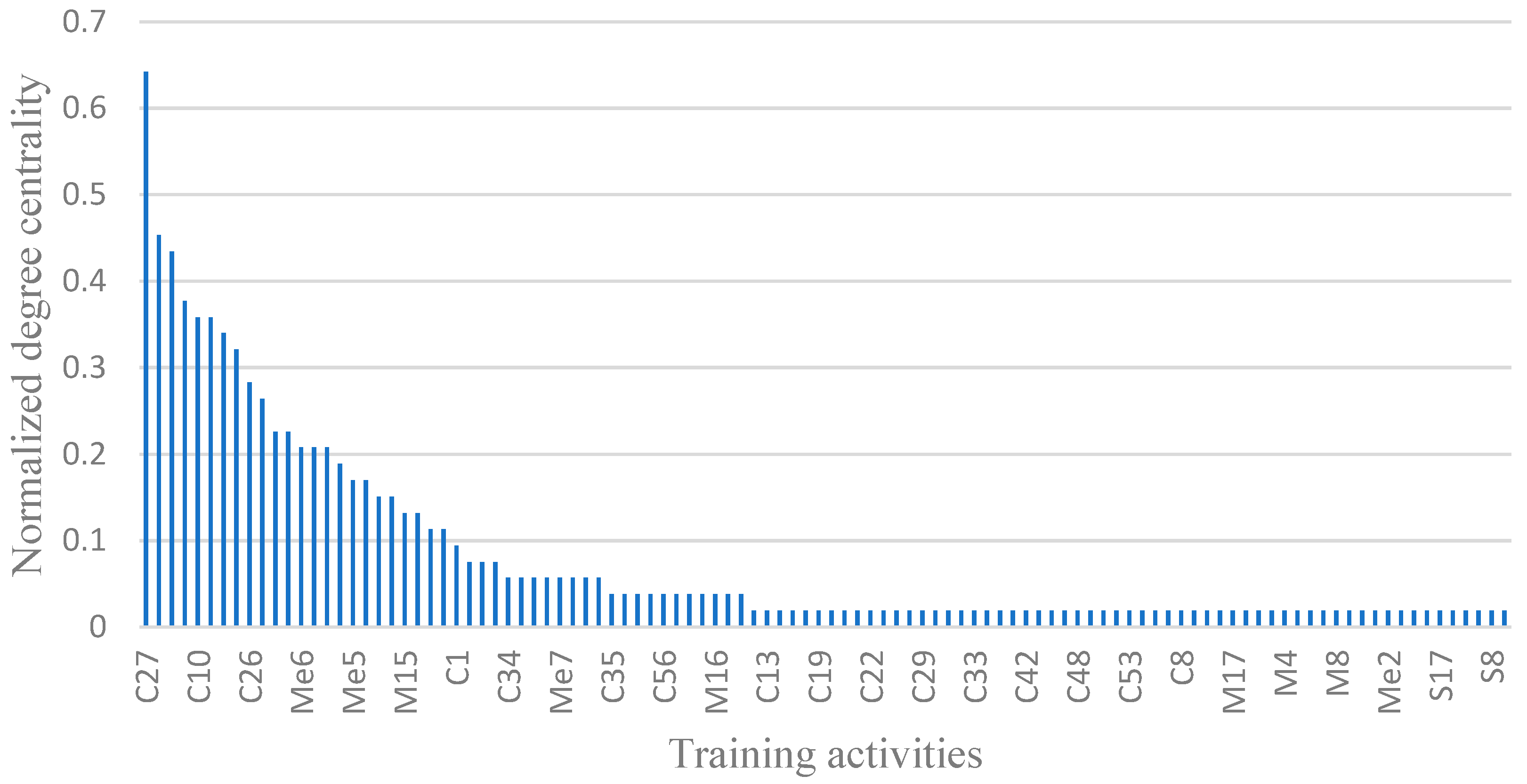
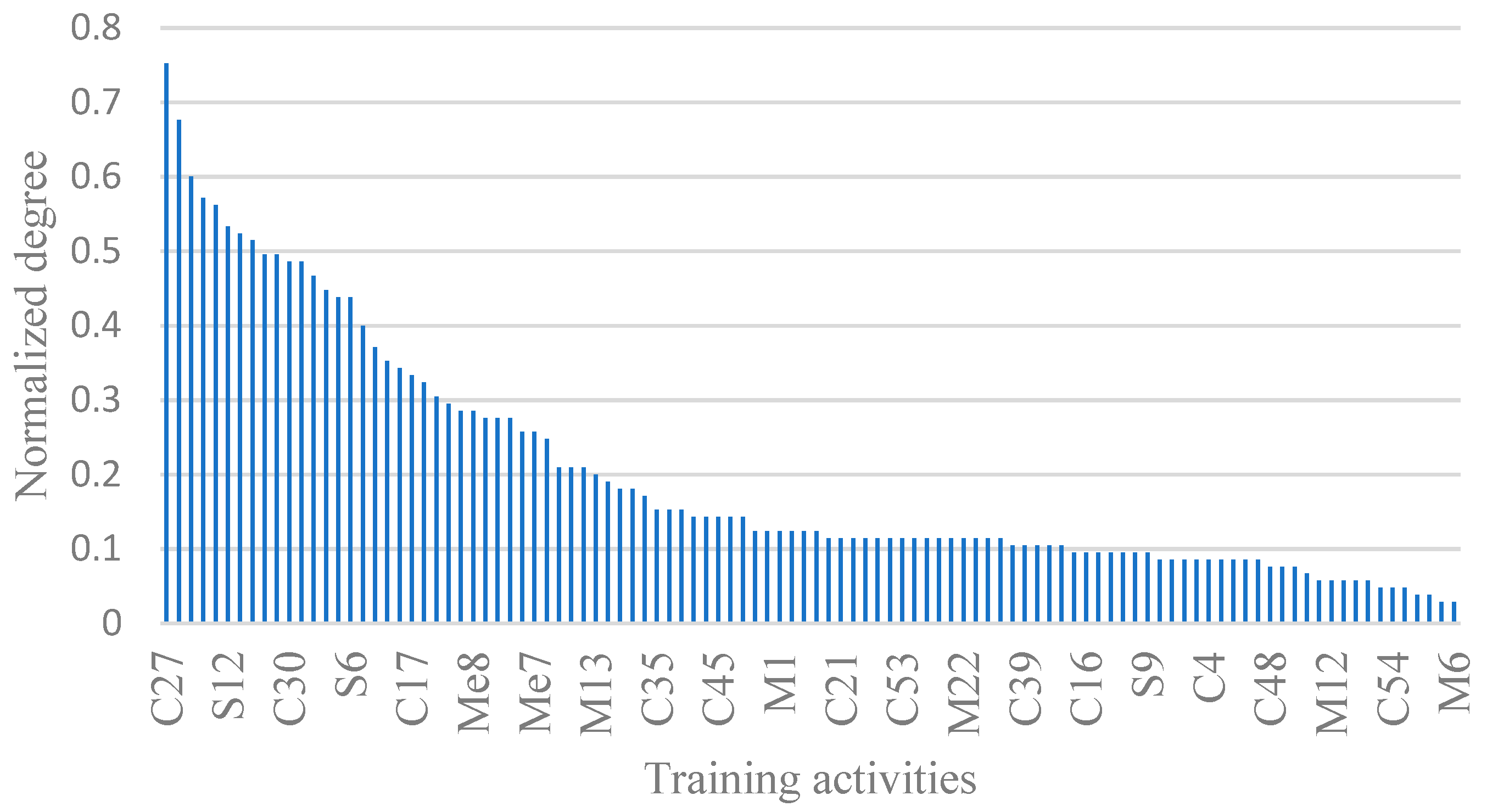
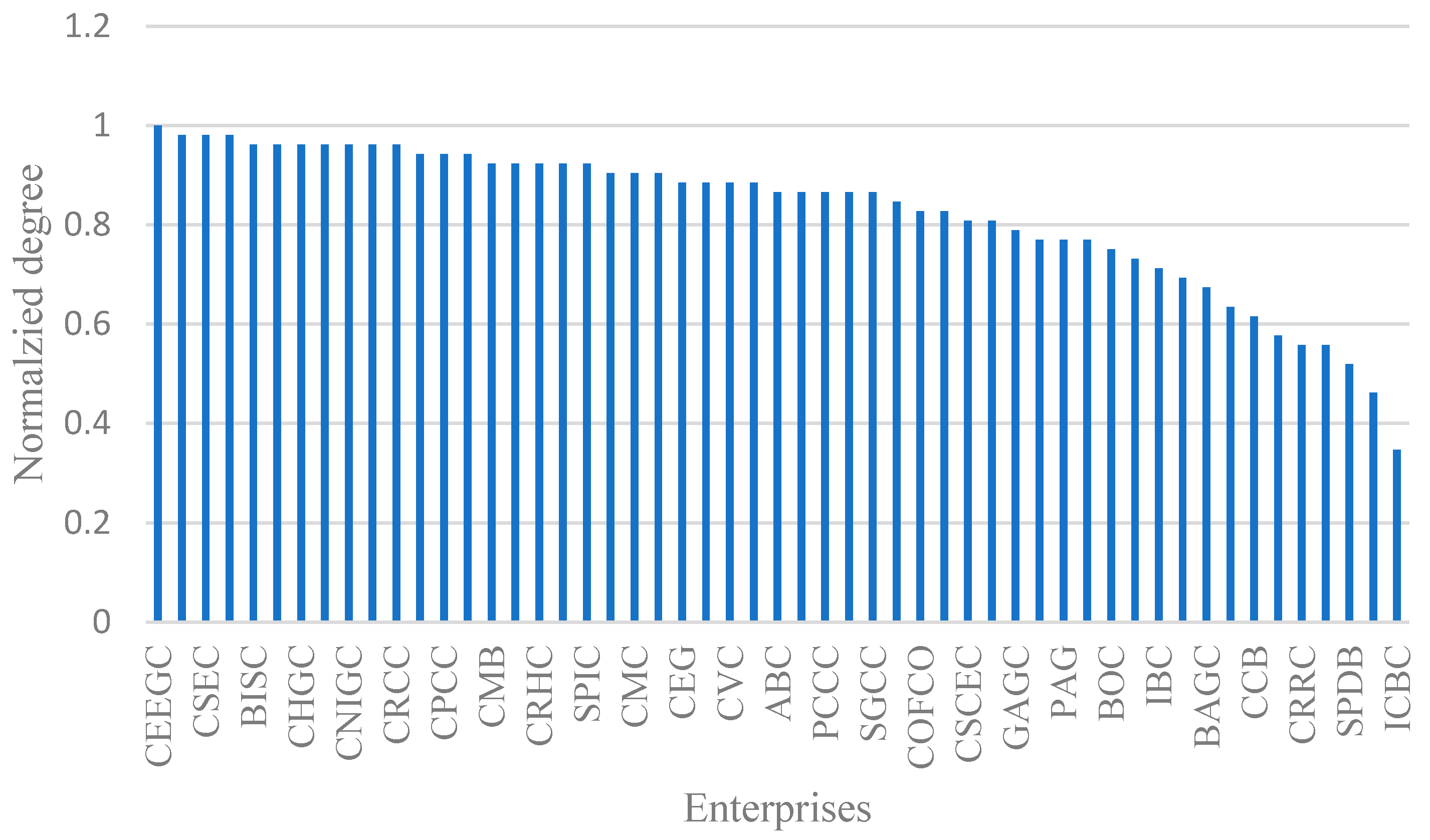
| No. | Company Name | Rank in 2017 | Abbreviation |
|---|---|---|---|
| 1 | State Grid Corporation of China | 1 | SGCC |
| 2 | China Petroleum & Chemical Corporation | 2 | CPCC |
| 3 | China National Petroleum Corporation | 3 | CNPC |
| 4 | Industrial and Commercial Bank of China | 4 | ICBC |
| 5 | China State Construction Engineering Corporation | 5 | CSCEC |
| 6 | China Construction Bank | 6 | CCB |
| 7 | Agricultural Bank of China | 7 | ABC |
| 8 | Ping An Insurance (Group) Company of China | 8 | PAG |
| 9 | SAIC Motor Corporation Limited | 9 | SAIC |
| 10 | Bank of China | 10 | BOC |
| 11 | China Mobile Communications Group Corporation Limited | 11 | CMCC |
| 12 | China Life Insurance (Group) Company | 12 | CLIC |
| 13 | China Railway Construction Corporation = Limited | 14 | CRCC |
| 14 | Huawei Investment & Holding Corporation Limited | 17 | HIHC |
| 15 | China Resources (Holdings) Corporation Limited | 18 | CRHC |
| 16 | China Southern Power Grid Company Limited | 20 | CSPGC |
| 17 | The People’s Insurance Company (Group) of China Limited | 23 | PICC |
| 18 | China National Offshore Oil Corporation | 24 | CNOOC |
| 19 | China Minmetals Corporation | 26 | CMC |
| 20 | China FAW Group Corporation Limited | 27 | CFGC |
| 21 | China Telecommunications Corporation | 29 | CTC |
| 22 | China North Industries Group Corporation Limited | 32 | CNIGC |
| 23 | COFCO Corporation | 33 | COFCO |
| 24 | Beijing Automotive Group Corporation Limited | 34 | BAGC |
| 25 | Sinochem Group Corporation Limited | 35 | SGC |
| 26 | Bank of Communication | 39 | BOCO |
| 27 | Power Construction Corporation of China | 42 | PCCC |
| 28 | Baoshan Iron & Steel Corporation Limited | 44 | BISC |
| 29 | China National Chemical Corporation | 46 | CNCC |
| 30 | China Merchants Bank | 47 | CMB |
| 31 | HBIS Group Corporation Limited | 49 | HBIS |
| 32 | Industrial Bank Corporation Limited | 50 | IBC |
| 33 | China Shipbuilding Industry Corporation | 51 | CSIC |
| 34 | Guangzhou Automobile Group Corporation Limited | 52 | GAGC |
| 35 | Shanghai Pudong Development Bank | 54 | SPDB |
| 36 | China Minsheng Bank | 55 | CMSB |
| 37 | China Pacific Insurance(group)Corporation Limited | 57 | CPIC |
| 38 | China National Building Materials Group Corporation | 58 | CNBM |
| 39 | China Shenhua Energy Company Limited | 61 | CSEC |
| 40 | China Huaneng Group Corporation Limited | 63 | CHGC |
| 41 | Shaanxi Yanchang Petroleum (Group) Corporation Limited | 64 | SYPC |
| 42 | CRRC Corporation Limited | 66 | CRRC |
| 43 | China Vanke Corporation Limited | 67 | CVC |
| 44 | China Energy Engineering Group Corporation Limited | 68 | CEEGC |
| 45 | China Everbright Group | 71 | CEG |
| 46 | China National Machinery Industry Corporation Limited | 72 | SINOMACH |
| 47 | Shaanxi Coal and Chemical Industry Group Corporation Limited | 74 | SCCIGC |
| 48 | Zhejiang Geely Holding Group | 78 | GEELY |
| 49 | Wuchan Zhongda Group | 79 | WZG |
| 50 | State Power Investment Corporation | 86 | SPIC |
| 51 | China Huadian Corporation Limited | 90 | CHC |
| 52 | Datong Coal Mine Group Corporation Limited | 95 | DCMGC |
| 53 | China National Aviation Fuel Group | 97 | CNAFG |
| Network | Number of Nodes (Scale of Network) | Density | Clustering Coefficient | Average of Geodesic Distance |
|---|---|---|---|---|
| 161 | 0.080 | 0 | 3.245 | |
| 108 | 0.374 | 1.360 | 1.8 | |
| 53 | 2.123 | 2.407 | 1.2 |
| No. | Group |
|---|---|
| 1 | SPDB, CLIC |
| 2 | SYPC, CRRC |
| 3 | CTC, CRHC, CVC |
| 4 | HIHC, CSCEC |
| 5 | CNIGC, CPCC |
| 6 | CNBM, SCCIGC, CNOOC |
| 7 | CMB, CMC, WZG |
| 8 | CNPC, CNAFG, CRCC |
© 2019 by the authors. Licensee MDPI, Basel, Switzerland. This article is an open access article distributed under the terms and conditions of the Creative Commons Attribution (CC BY) license (http://creativecommons.org/licenses/by/4.0/).
Share and Cite
Zhang, L.; Guo, X.; Lei, Z.; Lim, M.K. Social Network Analysis of Sustainable Human Resource Management from the Employee Training’s Perspective. Sustainability 2019, 11, 380. https://doi.org/10.3390/su11020380
Zhang L, Guo X, Lei Z, Lim MK. Social Network Analysis of Sustainable Human Resource Management from the Employee Training’s Perspective. Sustainability. 2019; 11(2):380. https://doi.org/10.3390/su11020380
Chicago/Turabian StyleZhang, Lu, Xiaochao Guo, Zhimei Lei, and Ming K. Lim. 2019. "Social Network Analysis of Sustainable Human Resource Management from the Employee Training’s Perspective" Sustainability 11, no. 2: 380. https://doi.org/10.3390/su11020380
APA StyleZhang, L., Guo, X., Lei, Z., & Lim, M. K. (2019). Social Network Analysis of Sustainable Human Resource Management from the Employee Training’s Perspective. Sustainability, 11(2), 380. https://doi.org/10.3390/su11020380





